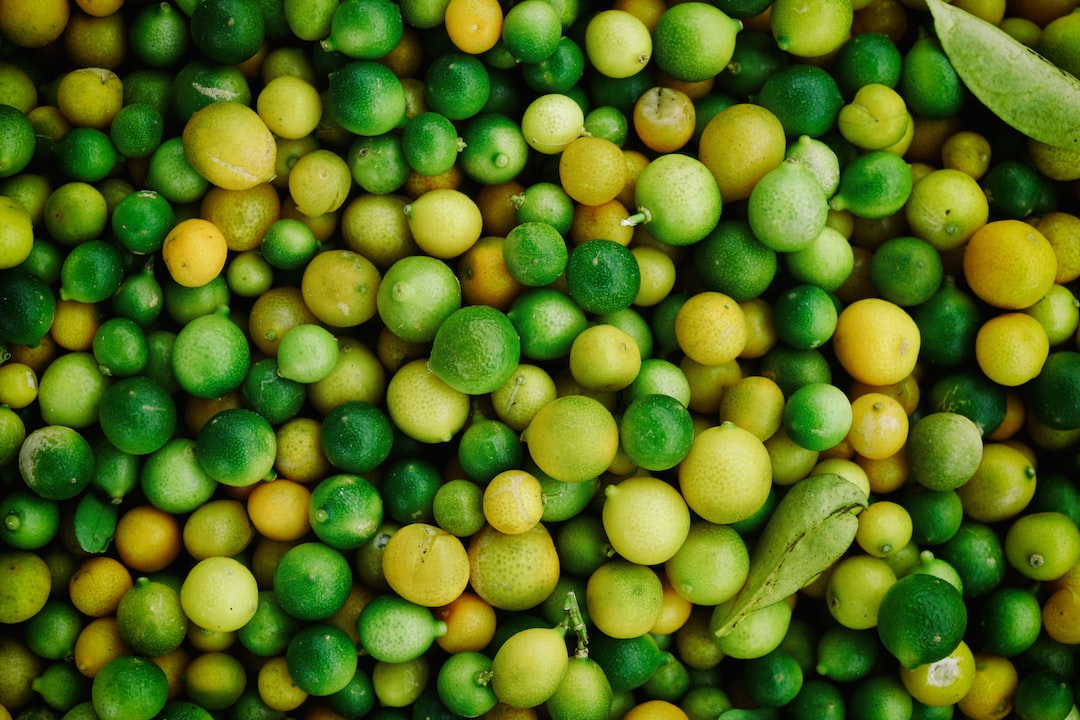Unlocking the Secrets of Passion Fruit: How to Determine If It’s Ripe

Passion fruit is a tropical fruit that has gained popularity all over the world for its unique flavor and numerous health benefits. It is known for its vibrant purple or yellow exterior and its juicy, tart, and sweet interior. This fruit is not only delicious but also packed with essential nutrients like vitamins A and C, fiber, and antioxidants.
When it comes to passion fruit, choosing the right one is crucial for optimal taste and nutrition. Ripe passion fruit offers a more intense flavor and a softer texture, making it perfect for eating fresh or incorporating into various recipes. In this article, we will explore the anatomy of passion fruit, the importance of ripeness, how to identify signs of ripeness, and the different varieties available.
Key Takeaways
- Passion fruit ripeness is crucial for optimal flavor and nutrition
- Sight, touch, smell, color, texture, and aroma are all indicators of ripeness
- The taste test is the ultimate way to determine if a passion fruit is ripe
- Different varieties of passion fruit have varying levels of sweetness
- Passion fruit is a delicious and nutritious addition to any diet
Understanding the Anatomy of Passion Fruit: What to Look For
Passion fruit has a unique appearance both on the outside and inside. The exterior of the fruit is smooth and can be either purple or yellow, depending on the variety. It is about the size of a tennis ball and has a slightly wrinkled texture when ripe. The skin is thin but tough, protecting the juicy pulp inside.
Inside the passion fruit, you will find a gelatinous pulp filled with small black seeds. The pulp is what gives passion fruit its distinct flavor – a combination of sweet and tart notes. The seeds are edible as well and add a slight crunch to the overall texture of the fruit.
The Importance of Ripeness: Why it Matters in Passion Fruit
Ripeness plays a crucial role in both the taste and nutritional value of passion fruit. When passion fruit is ripe, it develops a more intense flavor profile with a perfect balance of sweetness and tartness. The texture also becomes softer, making it easier to scoop out the pulp or juice the fruit.
In terms of nutrition, ripe passion fruit contains higher levels of vitamins A and C, as well as antioxidants. These nutrients are essential for maintaining a healthy immune system, promoting good vision, and protecting the body against free radicals.
Identifying the Signs of a Ripe Passion Fruit: Sight, Touch, and Smell
| Signs of a Ripe Passion Fruit | Description |
|---|---|
| Sight | The fruit should have a deep purple or yellow color. |
| Touch | The fruit should feel slightly soft to the touch. |
| Smell | The fruit should have a sweet, fruity aroma. |
There are several ways to determine if a passion fruit is ripe. First, visually inspect the fruit. Ripe passion fruit will have a vibrant color – purple or yellow – with a slightly wrinkled skin. Avoid fruits that are green or have a smooth and shiny appearance, as they are not yet ripe.
Next, gently press the fruit with your fingers. A ripe passion fruit should give slightly under pressure but not feel too soft or mushy. If it feels too firm, it is not yet ripe, and if it feels too soft, it may be overripe.
Lastly, give the fruit a sniff. A ripe passion fruit will have a strong, sweet aroma that is hard to miss. If it doesn’t have any scent or smells off, it is likely not ripe.
The Color Test: How to Determine If Your Passion Fruit is Ripe
Color is an important indicator of ripeness in passion fruit. As the fruit ripens, it changes color from green to purple or yellow, depending on the variety. The color should be vibrant and uniform throughout the fruit.
If you come across a passion fruit that is still green, it means it is not yet ripe and should be left to ripen further at room temperature. However, if you find a passion fruit with patches of brown or black on its skin, it may be overripe and past its prime.
The Texture Test: Feeling the Firmness of the Fruit

In addition to visual cues, feeling the firmness of a passion fruit can also help determine its ripeness. A ripe passion fruit should give slightly when gently pressed with your fingers but still maintain some firmness. If it feels too soft or mushy, it is likely overripe.
It is important to note that passion fruit does not continue to ripen once it is picked from the vine. So, it is crucial to choose a fruit that is already at the desired level of ripeness.
The Aroma Test: Sniffing Out the Perfect Passion Fruit
The aroma of a ripe passion fruit is one of its most distinguishing features. When a passion fruit is ripe, it emits a strong, sweet fragrance that is hard to miss. The scent is often described as tropical and floral, with hints of citrus.
To determine if a passion fruit is ripe, give it a gentle sniff near the stem end. If you can detect a strong and pleasant aroma, it is likely ripe and ready to be enjoyed. If there is no scent or if it smells off or unpleasant, it may not be ripe.
The Taste Test: Sampling the Flavor of a Ripe Passion Fruit
The taste of a ripe passion fruit is a delightful combination of sweetness and tartness. The pulp has a jelly-like texture with small black seeds that add a slight crunch. The flavor profile can be described as tropical, tangy, and slightly floral.
To sample the flavor of a ripe passion fruit, cut it in half and scoop out the pulp with a spoon. Avoid eating the skin as it is not edible. You can enjoy the pulp on its own or use it in various recipes like smoothies, desserts, or salad dressings.
Differentiating Between Varieties: Which Passion Fruit is the Sweetest?
There are several varieties of passion fruit available, each with its own unique flavor profile and sweetness level. The most common varieties are purple passion fruit (Passiflora edulis) and yellow passion fruit (Passiflora edulis f. flavicarpa).
Purple passion fruit has a more intense flavor with a higher level of tartness. It is often preferred for its strong aroma and vibrant color. Yellow passion fruit, on the other hand, is slightly sweeter and has a milder flavor. It is often used in juices and desserts.
Other varieties of passion fruit include the giant granadilla (Passiflora quadrangularis) and the banana passion fruit (Passiflora mollissima). These varieties have a different appearance and flavor profile, with the giant granadilla being larger and the banana passion fruit having a banana-like flavor.
Unlocking the Secrets of Passion Fruit for a Delicious and Nutritious Treat
In conclusion, passion fruit is a tropical fruit that offers a unique flavor and numerous health benefits. Choosing ripe passion fruit is essential for optimal taste and nutrition. By understanding the anatomy of passion fruit, identifying signs of ripeness through sight, touch, and smell, and sampling the flavor, you can unlock the secrets of this delicious and nutritious fruit.
Whether you enjoy passion fruit on its own or incorporate it into various recipes, it is sure to add a burst of tropical flavor to your meals. So next time you come across this vibrant fruit at your local grocery store or farmer’s market, don’t hesitate to give it a try. You won’t be disappointed by its sweet and tangy taste and the many ways you can enjoy it.
If you’re a fan of passion fruit, you know that the key to enjoying its delicious flavor is picking it at the perfect ripeness. But how can you tell if a passion fruit is ripe? Look no further than this informative article from Lawn World. They provide expert tips and tricks on how to determine if your passion fruit is ready to be enjoyed. From checking the color and texture to giving it a gentle squeeze, this article covers all the essential techniques. Don’t miss out on this valuable resource – click here to read more about how to tell if a passion fruit is ripe on Lawn World’s website.



